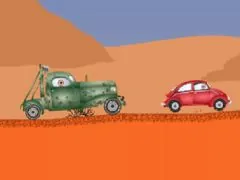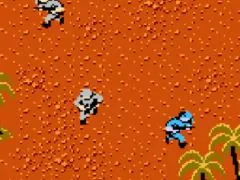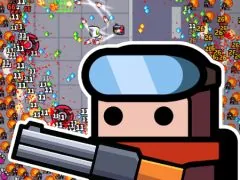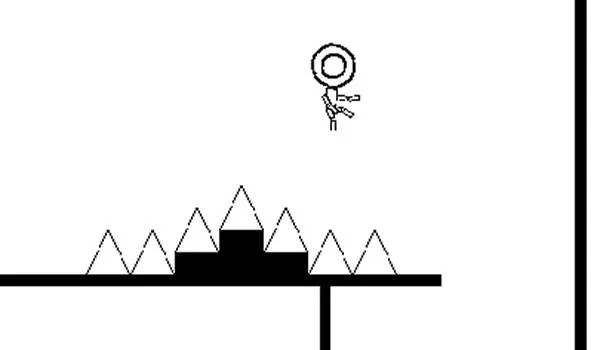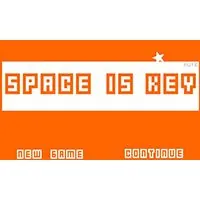STICKMAN ARMY
SIMILAR GAMES
Game Description
Stickman Army - GameNora
About Stickman Army - GameNora
We've undertaken an in-depth analysis of Stickman Army, a compelling title within the strategy gaming genre. This assessment provides a comprehensive overview of the gameplay mechanics, strategic elements, and overall player experience that define this engaging title. Our goal is to provide a definitive understanding of the game's core features and what makes it a noteworthy addition to the world of strategy gaming.
Gameplay Mechanics and Core Features
The heart of Stickman Army lies in its accessible, yet strategically rich, gameplay. The core mechanics revolve around the tactical deployment and management of a stick-figure army. Players are presented with a variety of levels, each featuring a distinct layout and set of challenges. The primary objective is consistent: defend a designated strategic point against waves of increasingly challenging enemy attacks. The game is intuitive to pick up, while providing enough depth to keep players engaged.
The initial stages of the game introduce players to basic troop types and the fundamentals of unit deployment. As players advance, they gain access to a broader selection of units, each possessing unique abilities and roles within the battlefield. This expanding roster of units is key to developing successful defensive strategies.
Key features include:
- Unit Deployment: The foundation of gameplay lies in the strategic placement of units to counter enemy assaults.
- Resource Management: Efficient allocation of in-game resources to recruit and upgrade troops.
- Wave-Based Combat: Levels are structured around waves of enemy attacks, increasing in difficulty.
- Unit Variety: A wide array of unit types, including riflemen, snipers, grenadiers, and more, each offering distinct advantages.
- Upgrades: Players can upgrade units to improve their combat effectiveness and unlock new abilities.
Strategic Depth and Tactical Considerations
Stickman Army offers a surprising degree of strategic depth, compelling players to consider several factors to achieve victory. It’s not merely about deploying troops; success hinges on thoughtful planning and adaptability.
Unit Composition
One of the most critical aspects of strategy involves carefully selecting and composing the unit types that comprise the defensive force. Different unit types excel in various roles. Understanding the strengths and weaknesses of each unit and how they interact with enemy units is fundamental to creating an effective defense. For instance:
- Riflemen: Serve as a primary damage-dealing unit, effective at mid-range combat.
- Snipers: Excel at long-range engagements, offering support from a distance.
- Grenadiers: Capable of inflicting area-of-effect damage, making them effective against clustered enemies.
Resource Allocation
Managing in-game resources efficiently is crucial. Resources are used to recruit new units and upgrade existing ones. Players must balance their spending to ensure they have the necessary units to withstand each wave of attacks while also investing in upgrades to enhance unit performance. Deciding when to save resources for later waves or to spend them on immediate reinforcements is a key strategic decision.
Level Design and Positioning
The layout of each level significantly impacts strategy. Players must consider the terrain, choke points, and available cover when positioning their units. Clever positioning can maximize the effectiveness of units and mitigate enemy advances. The terrain influences line of sight and the effectiveness of certain unit types, requiring players to adapt their strategies based on the map.
Adapting to Enemy Types
As the game progresses, players encounter a variety of enemy types, each with different combat styles and abilities. Successful strategies require adapting unit compositions and tactics to counter the specific threats posed by the enemy forces. This constant adaptation keeps the gameplay fresh and challenging.
Progression and Level Design
Stickman Army uses a progressive level design structure that gradually introduces new challenges and strategic elements. This approach keeps the gameplay engaging and prevents the early stages from becoming repetitive.
Level Progression
The game features multiple levels, each presenting a unique defensive challenge. Early levels act as tutorials, introducing the core mechanics and unit types. As players progress, the levels become more complex, requiring more sophisticated strategies. The enemy waves become more frequent and diverse, pushing players to refine their tactics.
Difficulty Curve
The difficulty curve is well-balanced, providing a suitable challenge for both casual and experienced strategy game enthusiasts. The game’s difficulty gradually increases, encouraging players to experiment with different unit combinations and strategic approaches. The progression is designed to keep players engaged, rewarding their learning and adaptation throughout the game.
Rewards and Unlockables
As players complete levels, they earn rewards, which can include in-game currency to purchase upgrades and unlock new units. These rewards incentivize players to continue playing and provide a sense of accomplishment. The unlockable content further enhances the gameplay experience, allowing players to customize their strategies.
Graphics, Sound, and User Experience
While simple in its aesthetic design, Stickman Army achieves an appealing visual presentation and delivers a satisfying user experience.
Visuals and Presentation
The game’s stick-figure graphics are clean and functional, allowing players to easily identify units and enemy types. The animations are smooth, ensuring that the action on the battlefield is easy to follow. Although the visuals are basic, the focus is on clear and concise presentation, enabling players to concentrate on the strategic elements of the gameplay. The overall look is simple and unpretentious, allowing the gameplay to take center stage.
Sound Design
The sound design complements the visual presentation. Sound effects provide clear feedback on in-game events, such as unit attacks and explosions. The music is well-suited to the gameplay, creating an engaging atmosphere without being distracting.
User Interface (UI) and User Experience (UX)
The user interface is designed to be intuitive and easy to navigate. The controls are responsive, making it simple to deploy units and manage resources. The overall user experience is designed to provide a smooth and enjoyable gaming experience.
Comparisons and Competitors
Stickman Army fits well within the broader landscape of strategy games. Comparing it to similar titles helps to highlight its strengths and differentiate it from the competition. It's crucial to understand how Stickman Army stands out from other games in the genre.
Genre Context
Stickman Army falls into the tower defense and real-time strategy (RTS) categories, combining elements from both. While not a complex RTS title, it retains elements that make it appealing to players of the genre. This hybrid approach provides accessibility while retaining depth.
Notable Competitors
Several other games share similarities with Stickman Army. Some key competitors include:
- Tower Defense Games: Titles that focus on wave-based combat and strategic placement of defensive units.
- Mobile Strategy Games: Games with simplified mechanics but strategic depth, perfect for mobile gaming.
Key Differentiators
Stickman Army distinguishes itself with its accessibility and straightforward gameplay. The stick-figure art style is instantly recognizable. The game strikes a balance between simplicity and strategic depth. It’s an easy game to pick up, while still offering meaningful strategic choices.
Strengths and Weaknesses
Like any game, Stickman Army has both strengths and weaknesses. Analyzing these aspects provides a comprehensive understanding of the game's overall quality.
Strengths
- Simple Yet Engaging Gameplay: The straightforward core mechanics make the game accessible to a wide audience.
- Strategic Depth: Offers plenty of tactical choices to make the gameplay interesting.
- Progression System: The gradual introduction of new units and challenges keeps the gameplay fresh.
- User-Friendly Interface: The game's controls and UI make it easy to pick up and play.
Weaknesses
- Graphics Limitations: While the art style is consistent, the game may not appeal to those who prefer more detailed visuals.
- Repetitive Elements: Some players may find the wave-based combat repetitive over time.
Conclusion
Stickman Army provides a compelling and engaging strategy gaming experience. Its blend of accessibility and strategic depth makes it suitable for a wide range of players. The game successfully offers a balanced combination of straightforward gameplay and meaningful strategic choices, delivering a satisfying gaming experience. Players interested in mobile strategy games will appreciate its well-designed levels, engaging gameplay loops, and accessible presentation. In conclusion, Stickman Army is a well-executed strategy game that offers an enjoyable and challenging experience.
Stickman Army places you in command of a stick-figure military unit tasked with defending a strategic position against waves of enemy attacks. Your role involves the strategic placement and management of troops, each with unique capabilities, to fend off the enemy forces. As you progress through the levels, the intensity and complexity of the attacks increase, challenging you to optimize your resources and troop deployments effectively. You’ll need to balance between various types of soldiers, from riflemen and snipers to grenadiers, to hold your ground against an ever-diversifying enemy.
Upgrade and Fortify
Success in Stickman Army hinges on your ability to upgrade and adapt. With each completed level, you earn resources that can be used to enhance your troop’s strengths, unlock new soldier types, or fortify your position with defensive barriers and advanced weaponry. Strategic decisions extend beyond the battlefield as you choose which upgrades to prioritize in order to counter the next wave of enemies more efficiently. The game’s mechanics encourage continuous learning and adaptation, making each victory a product of tactical foresight and quick decision-making.




